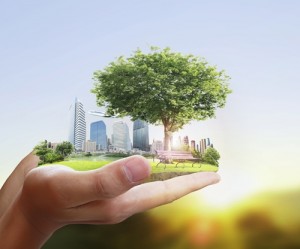
Consider the following statistics: "In 2001, the United States generated approximately two hundred thirty million (230 million) tons of waste (before recycling) - or approximately 4.4 pounds per person each day. Of this municipal waste, plastics currently account for approximately 11 percent, with plastic containers and packaging being the chief source, accounting for more than 11 million tons in 2001 (or about 5 percent) of the total waste generated that year."
Due to statistics such as mentioned above, packaging researchers are looking for more ways to both develop and promote the use of "bioplastics." Bioplastics refers to those materials made from "renewable resources." This environmentally-friendly packaging material type is widely considered to be a key driver in the packaging market in the near future.
Packaging World reported that the bioplastics industry, in comparison to traditional polymers, is seeing increased growth and acceptance for a number of reasons. A primary reason for acceptance sits on the shoulders of the rising cost of fossil fuel, used often in making modern plastics and polymers. As oil, gas and coal continue to rise in price, the polymers they make will also likely escalate in coming years. This makes bioplastics a great alternative, since this will allow manufacturers to take advantage of a less-expensive, less-wasteful production style.
Environmental regulations are playing an increasingly important role in many industries, including packaging. These mandates will require companies to adopt more environmentally-prudent products. Broad regulations for specific polymers are not expected, but they will be one of two main players that influence upcoming development styles.
The second, and more important, reason for the growing use of bioplastics will be changing consumer perceptions of different products. Shoppers will increasingly choose sustainable packaging options known to make a difference over time. As a result, many consumers will turn directly to the growth of this more biologically-friendly market and away from more expensive or wasteful practices.
Bioplastics and technological practices
The news source continued by stating that through production and processing technology improvements, researchers will uncover many building-block chemicals and similar components needed for production improvement.
Examples of the strides this research hopes to uncover includes new discoveries regarding second- and third-generation cellulose conversion attempts for non-food crops like corn husks, grass and wood. If it becomes easier to access cellulose waste over time, as well as an economic improvement in the cost of conversion, it will be easier for these materials to improve upon the costs of traditional polymer-based products. Future technology developments will likely make it even easier for companies everywhere to harness a less-expensive yet still effective means of processing products through a cheaper means.
These advances are expected to lead to long-term gains including economic incentives for increased acceptance of biopolymers in the market.
Different forms of polymers
Packaging Europe noted that there are several different types of these polymers that companies can use.
Starch-based plastics are one example, as their main composition is derived from a number of different sources, making them initially easy to find. Their differing qualities strongly depend on the type and amount of plasticizer added to their use, however, and they'll mostly be used in flexible and rigid packaging.
Meanwhile, plastics based in cellulose are more abundant, as cellulose is the major component in several common substances including cotton, jute and wood. To increase its solubility and processing ability, the biomaterial is modified chemically, which can be a difficult process. The ultimate result has high transparency and strength, but is sensitive to water and can see negative results if exposed to the environment. This cellulose based product will be used most commonly to close bottles.
A third type of product, polylactic acid, will be a renewable and biodegradable polymer that can be highly elastic but low in hardness. It will be flexible to long-term use in many applications such as labeling, bags and foaming packaging for foods.







